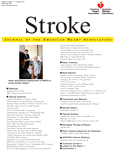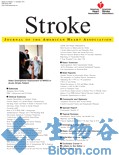Stroke:脑血管再灌注有待进一步发展
2012-12-26 Stroke 互联网 geniusgodyu
早期再灌注对急性脑缺血和急性心肌缺血都是最有效的治疗方法。但是头颈部循环床为再通的干预提出了更大的挑战。再灌注的历史性发展情况之前还没有出现过系统性比较。为此,美国加州大学David Geffen医学院神经科的Jeffrey L. Saver等人进行了一项研究,研究结果在线发表在2012年11月27日的Stroke杂志上。研究结果发现:脑缺血相对心脏缺血的再灌注治疗发展更慢,效果也更差。需要脑血管
早期再灌注对急性脑缺血和急性心肌缺血都是最有效的治疗方法。但是头颈部循环床为再通的干预提出了更大的挑战。再灌注的历史性发展情况之前还没有出现过系统性比较。为此,美国加州大学David Geffen医学院神经科的Jeffrey L. Saver等人进行了一项研究,研究结果在线发表在2012年11月27日的Stroke杂志上。研究结果发现:脑缺血相对心脏缺血的再灌注治疗发展更慢,效果也更差。需要脑血管专用的技术提高治疗效果及安全性。
该研究是一项系统对照研究。研究人员在Medline上搜索确定所有关于急性心肌梗死冠脉再通的多臂对照研究和急性缺血性卒中脑血管再灌注的多中心研究中有报道血管成像再灌注率的文献。
研究结果显示:37个冠脉再灌注研究,纳入10908位从1983年-2009年的患者;10个脑血管再灌注试验纳入从1992年-2009年的1064位患者。冠脉再灌注试验纳入10个单用静脉内溶栓治疗的试验、8个联合静脉内溶栓和经皮经血管内冠状动脉成形术(用或不用支架)试验、3个动脉内溶栓试验、16个经皮经血管内冠脉成形术试验(用或不用支架)。脑血管再灌注试验纳入1个单用静脉内溶栓的研究、3个动脉内溶栓试验、3个单用血管内装置和3个血管内治疗(有些联合动脉内溶栓)。在两个循环床中,形成再灌注方面,血管内治疗优于外周使用溶栓药物。在冠脉方面,1980年代再灌注率达到较高水平,随后的30年又有一些提高。在脑血管方面,1990年代,再灌注水平达到中等,随后缓慢增长。最近的一项研究中, 2005-2009年,心脏再灌注率超过了脑血管再灌注,部分再灌注86.1%对比61.1%,完全再灌注78.6%对比23.4%。
该研究显示:脑缺血相对心脏缺血的再灌注治疗发展更慢,效果也更差。需要为医师们进一步研究脑循环专用的技术,让他们能够像治疗心脏缺血一样安全地为缺血脑组织重建血流。

doi: 10.1161/STROKEAHA.112.666925
PMC:
PMID:
Evolution of Reperfusion Therapies for Acute Brain and Acute Myocardial Ischemia
Richa D. Patel, BS and Jeffrey L. Saver, MD
Background and Purpose—Early reperfusion is the most effective therapy for both acute brain and cardiac ischemia. However, the cervicocephalic circulatory bed offers more challenges to recanalization interventions. The historical development of reperfusion interventions has not previously been systematically compared. Methods—Medline search identified all multi-arm, controlled trials of coronary revascularization for acute myocardial infarction and multicenter trials of cerebral revascularization for acute ischemic stroke reporting angiographic reperfusion rates. Results—Thirty-seven trials of coronary reperfusion enrolled 10 908 patients from 1983 to 2009, and 10 trials of cerebral reperfusion enrolled 1064 patients from 1992 to 2009. Coronary reperfusion trials included 10 of intravenous fibrinolysis alone, 8 combined intravenous fibrinolysis and percutaneous transluminal coronary angioplasty with or without stenting, 3 intra-arterial fibrinolysis, and 16 percutaneous transluminal coronary angioplasty with or without stenting. Cerebral reperfusion trials included 1 of intravenous fibrinolysis alone, 3 intra-arterial fibrinolysis, 3 endovascular device alone, and 3 of endovascular treatment ± intravenous fibrinolysis. In both circulatory beds, endovascular treatments were more efficacious at achieving reperfusion than peripherally administered fibrinolytics. In the coronary bed, rates of achieved reperfusion began at high levels in the 1980s and improved modestly over the subsequent 3 decades. In the cerebral bed, reperfusion rates began at modest levels in the early 1990s and increased more slowly. Most recently, in 2005 to 2009, cardiac reperfusion rates substantially exceeded cerebral, partial reperfusion 86.1% versus 61.1%, complete reperfusion 78.6% versus 23.4%. Conclusions—Reperfusion therapies developed more slowly and remain less effective for cerebral than cardiac ischemia. Further, cerebral circulation–specific technical advances are required for physicians to become as capable at safely restoring blood flow to the ischemic brain as the ischemic heart.
本网站所有内容来源注明为“梅斯医学”或“MedSci原创”的文字、图片和音视频资料,版权均属于梅斯医学所有。非经授权,任何媒体、网站或个人不得转载,授权转载时须注明来源为“梅斯医学”。其它来源的文章系转载文章,或“梅斯号”自媒体发布的文章,仅系出于传递更多信息之目的,本站仅负责审核内容合规,其内容不代表本站立场,本站不负责内容的准确性和版权。如果存在侵权、或不希望被转载的媒体或个人可与我们联系,我们将立即进行删除处理。
在此留言











